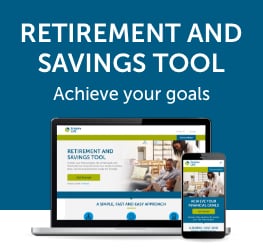
TikTok thinks I have ADHD, or at least that I care about ADHD. My feed is full of ADHD content: people talking about the fact they have it, how it impacts their life, and what sounds and music can help calm the ADHD brain. And I can’t count the number of times, when visiting friends and family, that conversation has turned to ADHD and whether someone has it.
Struggles with focus, organization, emotional regulation–we’re all feeling it to varying degrees. In some cases, a friend has actually been diagnosed with ADHD. This isn’t just a coincidence; it’s a reflection of a real and growing trend. More and more people are being diagnosed later in life, and it’s changing how we understand the condition.
For decades, ADHD was seen almost exclusively as a childhood disorder. Many people thought that children would ‘grow out of it’. And many do. But we now know that the majority of cases persist into adulthood. In fact, it affects approximately 5% to 9% of children and adolescents and 3% to 5% of adults.1
The adult diagnosis boom
ADHD diagnosis as an adult can be a moment of profound revelation and validation, an explanation for some of the struggles of life: the frequent job changes, unfinished projects, chaotic living spaces, the feeling of being ‘lazy’ or ‘unmotivated’ despite immense effort, or the constant internal battle to keep up with the demands of everyday life.
Different reasons may drive someone to seek assessment for ADHD. For example:1
- Their child has been diagnosed with ADHD and they recognize symptoms in themselves
- They keep hearing or reading about ADHD and relate to the symptoms
- They have started to experience symptoms of ADHD for the first time in their life, perhaps resulting from the responsibilities and demands of adulthood. This is especially possible where the person had significant supports, structure and routines in earlier life, and/or above-average intelligence
ADHD isn’t one size fits all: the gender divide
ADHD can present in three different ways:1
.png?width=620&height=424&name=Bulletin%20bannersAW%20speakers%20(9).png)
People with ADHD display differences in brain structure and function.2 As a result, they can struggle to:
- Focus and pay attention
- Control their thoughts, words, actions and emotions
- Develop social skills and self-awareness
- Store and recall information
- Make informed decisions
- Be organised, stay organised and prioritise and manage their time effectively
Men with ADHD are more likely to exhibit the traditional, more externalized symptoms that are easily spotted by parents and teachers.3 These include:
- Hyperactivity (physical restlessness, fidgeting)
- Impulsivity (blurting out answers, interrupting conversations, reckless behaviour)
- Disruptive behaviour in school or at work
- Higher rates of conduct disorders and substance misuse
Because men’s symptoms are often disruptive to others, they tend to be noticed more and lead to earlier referrals for evaluation.
Women with ADHD, on the other hand, are more likely to present with less obvious symptoms,3 including:
- Inattention (Daydreaming or zoning out)
- Chronic feelings of overwhelm and anxiety
- Difficulty managing emotions. This can include intense mood swings or extreme sensitivity to criticism or rejection
- Hyper-focusing on tasks they find interesting while struggling with everything else
- Perfectionism and a tendency to overcompensate to hide their struggles
These struggles often go unnoticed. A girl who is quiet and a good student but constantly feels overwhelmed, forgets deadlines, and feels like a fraud may be praised for her quiet nature rather than flagged for an underlying issue. Society’s expectations of women to be “well-behaved” can lead them to develop sophisticated coping mechanisms that mask their symptoms. It’s no surprise that women are often diagnosed in their 30s or 40s after years of burnout, anxiety and depression.4
The rising cost of treatment
It’s positive that more adults are seeking treatment; however, there is an important cost to our employee benefit plans. We’re seeing more plan members submitting claims for ADHD medications. From data provided by Express Scripts Canada, drugs that treat ADHD made up approximately 5% of all drug claims that Empire Life paid in 2024.
Since 2020, we’ve seen a 27% increase for adults aged 25-34 and a 33% for those aged 35-44.5 It’s likely not a coincidence that this timing coincides with the COVID-19 pandemic, as many people were working from home for the first time. The lack of structure or increased stressors may have impacted their ability to focus or triggered other symptoms of ADHD. This is also when the updated Canadian ADHD practice guidelines were released.
Employees with ADHD may see higher costs as well, including out of pocket costs related to drug claims, and mental health practitioner costs once they have exhausted their paramedical benefits.
What employers can do: Top 5 strategies for an inclusive workplace
Many people with ADHD have incredible strengths in areas like creativity, hyperfocus, energy, and problem-solving. As a leader, you can create a workplace environment where these talents shine. This isn't about giving special treatment; it's about making small, smart adjustments that benefit everyone, but particularly help employees with ADHD manage common challenges like organization, attention, and executive functions.6
Here are the top 5 practical steps you can take:
- Structure communication and meetings
For people with ADHD, long and unstructured meetings and emails can be mentally exhausting and hard to track.
- Be direct and concise in communications: start communications with a clear summary or the key action items.
- Use visual aids and bullet points: don’t rely solely on verbal instructions. Use numbered lists, bold text and visual flowcharts or diagrams to explain complex processes.
- Record meetings or use AI transcription and summaries: generate clear notes of decisions and action items to help employees with diverse learning styles and attention needs.
- Embrace flexible workspaces5,7
A noisy office environment can be a nightmare for sensory processing and attention. Flexibility allows individuals to manage their focus needs.
- Offer choice: provide access to a variety of workspaces, such as quiet zones, collaborative areas, standing desks and adjustable lighting.
- Allow fidgeting and movement: accept employees taking short, sometimes frequent breaks and encourage the use of fidget tools (such as stress balls or resistance bands), as these often help with concentration.
- Acknowledge noise: be open to employees using noise-cancelling headphones or working remotely to manage sensory input, where appropriate for their role.
- Focus on outcomes5,6
Traditional time tracking can punish employees with ADHD who may experience time blindness, where they have difficulty accurately judging how long a task takes, or have an internal clock that doesn’t align with a typical workday. Where possible:
- Allow for different schedules: if possible, permit flexible start and end times. Someone who is a night owl might do their best, most focused work from 11 AM to 7 PM.
- Chunk out large projects: break down long-term goals into smaller, measurable milestones – this can make the work feel less overwhelming.
- Provide simple organizational tools5,6
Executive function, the brain’s internal management system that handles planning, organizing and prioritizing, is a challenge for many with ADHD. You can help by providing an external system.
- Standardize systems: choose one shared project management tool and require teams to use it consistently, reducing any confusion generated by information stored across multiple platforms.
- Use external reminders: encourage using calendars to track important tasks and deadlines, and follow up with any deadlines communicated verbally with a calendar invitation or email.
- Conduct short, regular check-ins: rather than one long, formal monthly or quarterly review, schedule shorter weekly check-ins to quickly review priorities and clear up any immediate roadblocks. Different employees may need a different cadence, so be open to changes.
- Cultivate a culture of openness and psychological safety1,5,8
The fear of being judged for simple mistakes, disorganization, or imperfect work can be crippling and prevent employees from asking for accommodations.
- Lead with empathy: acknowledge that everyone has unique needs and different ways of working and learning. By talking about your own preferred ways of focusing or taking breaks, you can normalize flexibility.
- Focus on the solution: if a mistake happens, focus on creating a system, such as a checklist or automated prompt or task reminder, to prevent it from happening again.
- Maintain confidentiality: if an employee discloses an ADHD diagnosis or asks for a specific adjustment, handle it with professionalism and discretion, as you would with any personal health information.
- Provide opportunities for connection, learning and growth: sponsor mentorship programs, encourage coaching opportunities, and create and empower peer support networks and employee resource groups.
Takeaways and resources for everyone
Whether you have been diagnosed with ADHD, suspect you may have ADHD, manage someone with ADHD, and/or have a family member or friend with ADHD, awareness can help all of us recognize ADHD and support those living with it by creating access to care and accommodations.
The Canadian ADHD Resource Alliance has a helpful guide on how to talk about ADHD. While I encourage reading the whole guide, a few of the takeaways I found helpful are:
- ADHD is a neurodevelopmental condition, not a behaviour disorder. Many people with ADHD also have other co-existing conditions.
- ADHD is a disability. With evidence-based treatment, support and appropriate accommodations, people with ADHD can thrive and live a full and rewarding life.
- Evidence-based treatment can include medication and non-medication strategies. Non-medication supports that are known to assist people with ADHD include psychological therapies, occupational therapy, coaching and other interventions.
For those with employee benefits, it’s a good idea to familiarize yourself with the resources that can help. Empire Life plan members with Extended Health Benefits have access to Mental Health Navigator, for example. The drug benefit and clinical psychologist paramedical coverage can also help cover the cost of medications and care. If the benefit plan includes our AssistNow® Employee Assistance Program (EAP), resources and professionals in that service can also help.
1 Canadian ADHD practice guidelines, 4.1 edition. Jan 2021
2 Canadian ADHD Resource Alliance. ADHD Language Guide Infographic. Dec 2021
3 Berkeley Psychiatrists Consultant Psychiatry Services. What are the differences between female and male ADHD? June 2024
4 National Institute of Mental Health. ADHD in Adults: 4 Things to Know
5 Express Scripts Canada. 2025 Drug Trend Report.
6 Centre for ADHD Awareness, Canada. ADHD in the Workplace. Creating a Neurodiverse Environment
7 Centre for ADHD Awareness, Canada. ADHD Symptoms, Impairments and Accommodations in the Work Environment
8 Enna Global. Understanding Rejection Sensitivity Dysphoria: A Toolkit for People Managers. 2025


